Sewing Sweater Knits with Confidence
Here’s the know-how you need when handling knits, from meshy, open-weave fabric to chunky woolens
Among my favorite creative projects is sewing sweater knits. They’re comfortable to wear, quick and easy to sew and have a tactile quality unlike the ubiquitous flat wovens and knits so many of our clothes are made of. These distinctive fabrics include knits with lacy patterns, ones with a secondary design in an additional yarn (often, this pattern is visible primarily on the right side of the fabric), or fabrics knit from textured yarns. (Wool jersey knits, though “sweatery” in feel, aren’t included in this category because of their flat surface and tight weave.) The open-weave structure and the lofty, fuzzy, or hairy surface of true sweater knits call for special sewing techniques.
To guide you in creating the most appealing garments sewing sweater knits, I’ll show you how to select appropriate pattern styles, seams and seam finishes, and edge treatments. With these techniques at your fingertips, you can create a whole wardrobe of sweaters that will make you look forward to cooler weather.
Treat yardage as you would a fine sweater
As with any fabric, it’s important to test a swatch of your sweater-knit fabric for colorfastness and shrinkage before cutting and sewing. I recommend treating these sometimes unstable fabrics as you would a fine sweater: Hand-wash them in cool water with a drop of baby shampoo, rinse them well, and lay them flat to dry.
Next, test your fabric for iron temperature. Many sweater knits contain synthetic fibers that may not tolerate much heat. Begin with the lowest setting on your iron, plenty of steam, and a press cloth. Gradually increase the iron temperature; when the fabric begins to curl or lose its distinctive sponginess, the iron is too hot. You may find that steam without pressure flattens or creases the fabric as desired. Simply hold the iron above the fabric until the steam permeates the fibers, then gently press the fabric with your fingers. Always allow sweater knits to cool before moving them from the ironing surface.
Simple designs are best for sewn sweaters
The most appropriate patterns for sweater-knit fabrics have minimal seaming, and seams that are vertical rather than horizontal. Good choices are styles that look like purchased sweaters: cardigans, pullovers, cowl necks, jackets, and sweater coats. The ribbed structure of sweater knits enables the fabric to stretch horizontally and is what makes sweaters so comfortable. By avoiding horizontal seams that go around the body, you allow that stretch to perform its work uninhibited. On the other hand, you may need to stabilize horizontal seams, such as shoulder seams, that will receive stress during wear.
Although sweaters tend to rely upon the fabric’s stretch and drape for their shaping, you can use darts (opt for vertical rather than horizontal ones) or princess seams to further sculpt the garment.
Most sweater knits are best stitched with a regular sewing machine; serged seams are less secure because they can slide off the edge of an open-weave fabric. On the following pages, I’ll show you the straightforward and speedy techniques that will enable you to make a cozy sweater in an afternoon.
Use freezer paper to make stabilizing templates
Some sweater knits have a tendency to curl or spread when cut. To stabilize the fabric during cutting and construction, make a template of each pattern piece—minus seam allowances—out of grocer’s freezer paper; for any piece cut on the fold, make a full template of the piece.
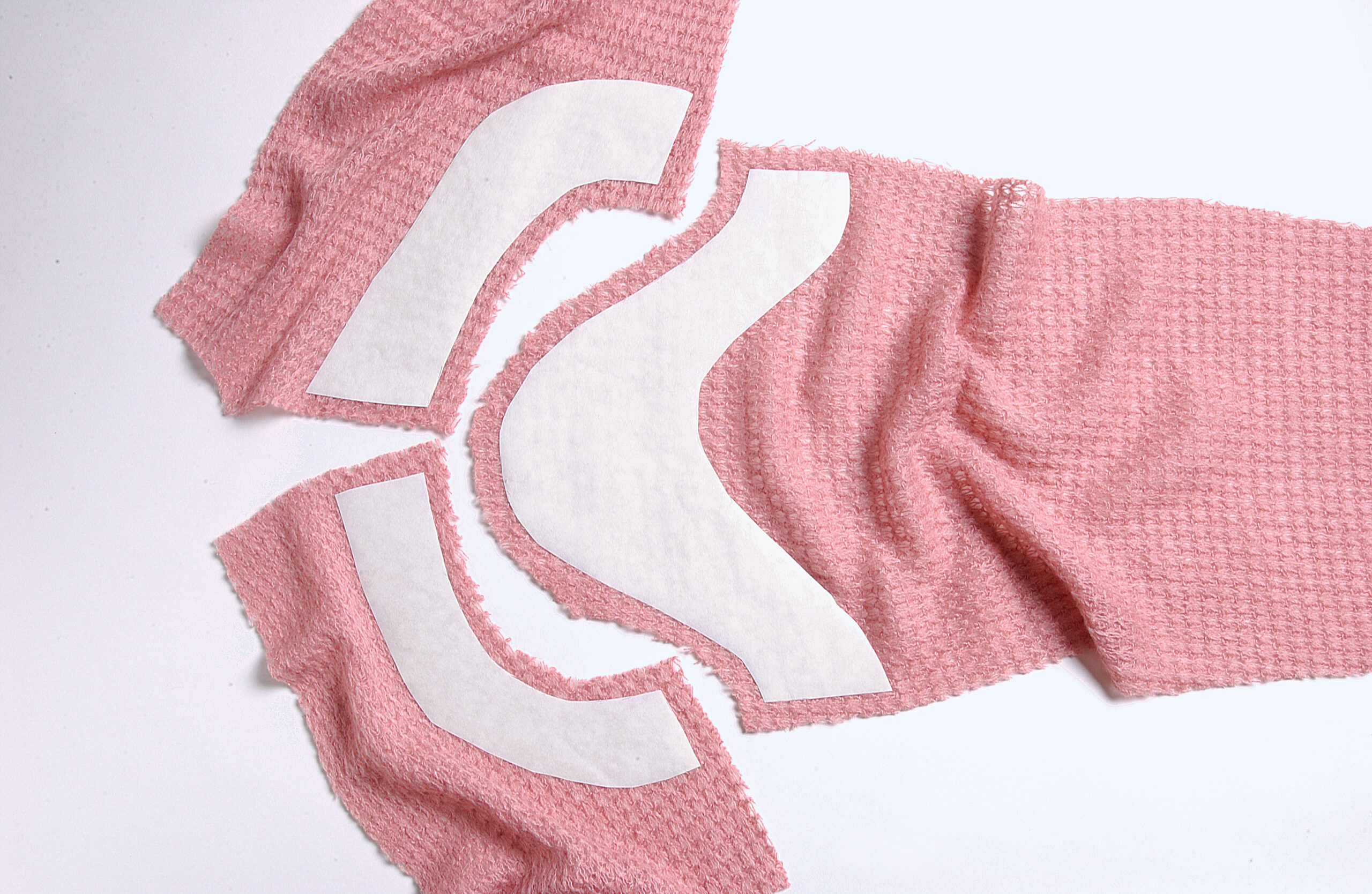
Using a dry iron, press the shiny side of the paper onto the wrong side of the uncut fabric. This paper template will remain in place during construction, stabilizing the fabric as you sew. Stitch just outside the cut edge of the paper, completing all major seams before gently removing the paper from the knit.
As a shortcut, make small templates for the trickiest areas of a garment. For example, inserting a set-in sleeve can be made easier by cutting a template of the shape of the cap of the sleeve as shown above. This template needs to be only about 2 inches wide. Make another for the armscye, again about 2 inches wide.
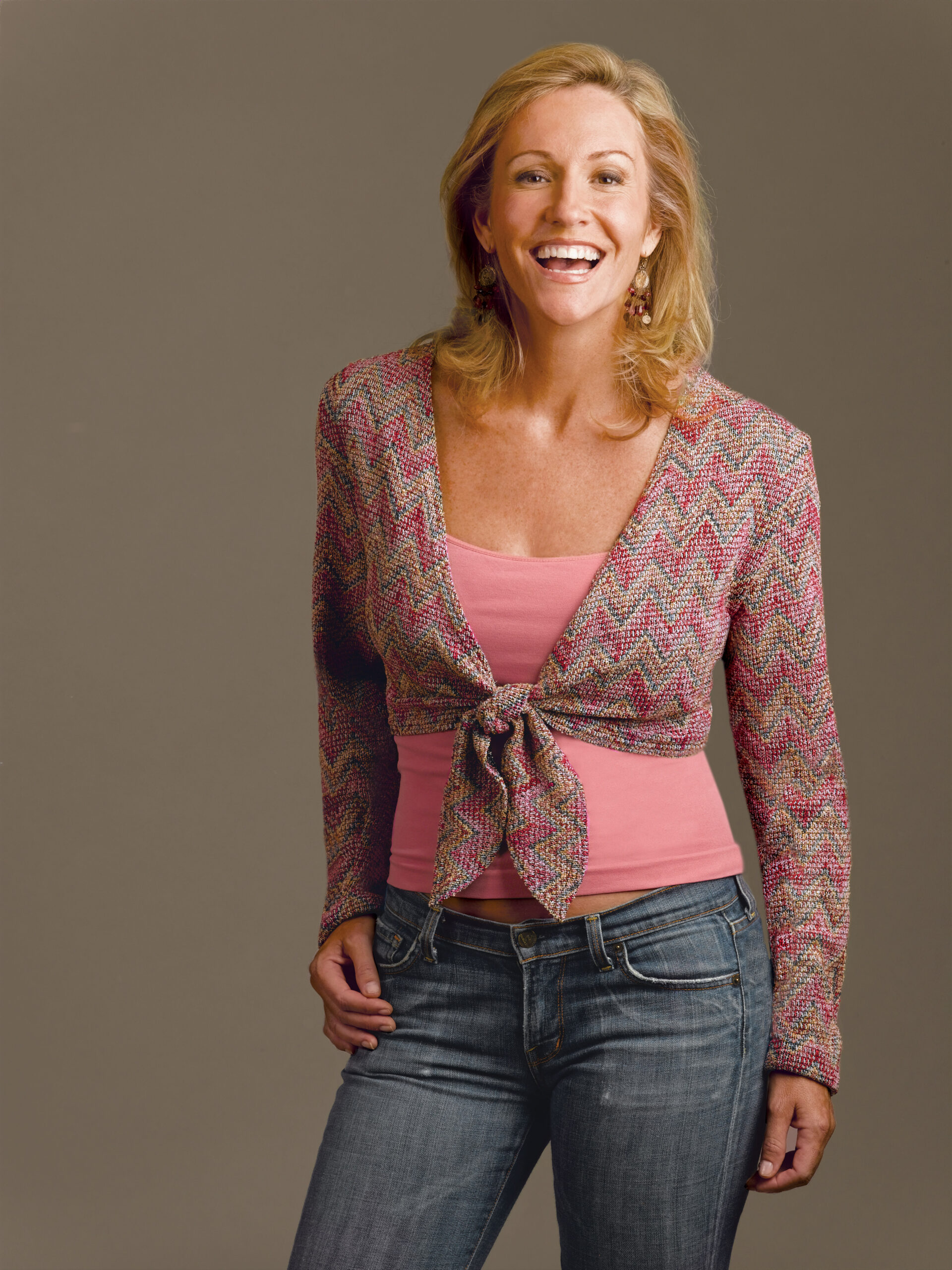
Sew 3361)
Seams should stretch…
To prevent seams from breaking when a sweater-knit garment stretches, use a zigzag stitch—it has the give you need.
Use a stitch length of 2.0 mm and a width of 3.0 mm and polyester or cotton-polyester thread. If your fabric is lacy, place a strip of mesh knit or bias-cut organza along the seamline for extra stability; this strip will stabilize and stretch, and will also keep the open-weave surface from catching on the toes of the presser foot.
…or not stretch
Horizontal seams, such as shoulder seams, should be stabilized by incorporating a strip of clear, elastic, lightweight fabric selvage, or twill tape, in the seam. Sleeve caps in unstable knits can benefit from interfacing.
Three seam finishes for sweater knits
Unlike fine jersey and interlock knits, sweater-knit fabrics ravel at the cut edges. Finishing options include:
- A serged edge, for dense or tightly knit fabrics
- Parallel rows of zigzag stitching to anchor pressed-open seam allowances; trim excess fabric outside stitching
- A single row of zigzag or cover stitching centered over pressed-open seam allowances; trim excess fabric
outside stitching.
Finishing touches for edges and closures
The neckline and front facings are allowable in sweater knits but can be bulky along their attachment seams. Substitute a lighter-weight knit fabric for the facing, if possible, matching its color to the sweater or to the wearer’s skin tone, depending on how visible the facing will be. Interface the facing with a lightweight fusible knit, and attach it with a zigzag seam. A line of loose running stitches, sewn by hand, along the neckline will encourage the facing to roll toward the inside of the garment.
Bindings of ribbing fabrics, stretch velvet, contrasting- or matching-color smooth knits or leather can replace facings. In general, the looser your sweater knit, the wider the binding will need to be to secure the edges. Before attaching the binding, stitch a row of zigzag stitches just inside what will be the finished stitching line of your facing area. Use a zigzag stitch to attach the binding to the edge, with right sides together, and to stitch in the ditch from the sweater’s right side to fasten the binding edge on the inside.

to the fabric. Zippers and buttons are classics that are well suited to these knits.
Improve darts with padding
Darts are an excellent option for adding shape to a sweater-knit garment. To balance the bulk of a stitched dart when it’s pressed to one side, pad the other side with interfacing.
Cut a strip of interfacing fabric three times the width of the dart and 2 inches longer. Fold the strip in half lengthwise, and align the fold with the folded edge of the dart. Catch the strip in the stitching as you sew the dart, using the same zigzag stitch as you did for the seams. Press the dart to one side and the layers of interfacing to the other as shown above.
Interfacing options for open knits
If you choose the right patterns, the only places you’ll need to interface are the sides of a zipper opening and the area behind buttonholes. Sew-in stretch fabrics are the most compatible interfacings for sweater knits. Baste the interfacing into place by hand, then catch it in your final machine stitching. I use the following fabrics in place of conventional interfacings:
- Mesh knit: appropriate for fabrics that have a good bit of stretch; I prefer beige and black, which blend with most fabric colors (available in the swimwear section of fabric stores)
- Power net: suitable for more stable knits (available from lingerie sewing-supply sources)
- Bias-cut organza: the best choice for fine-gauge, lacy, or open knits.
Three hems for sweaters
Keep hems at least 1 inch wide—narrower hems are a challenge to sew and look disproportionate on bulky garments.
- For bulky knits, use a wide serger cover stitch.
- For open, lacy knits, catchstitch the hem by hand, after binding the hem edge with mesh knit, seam binding,
or bias tape. - For densely knit fabrics, use a wide stretch twin needle (size 4.0/75).
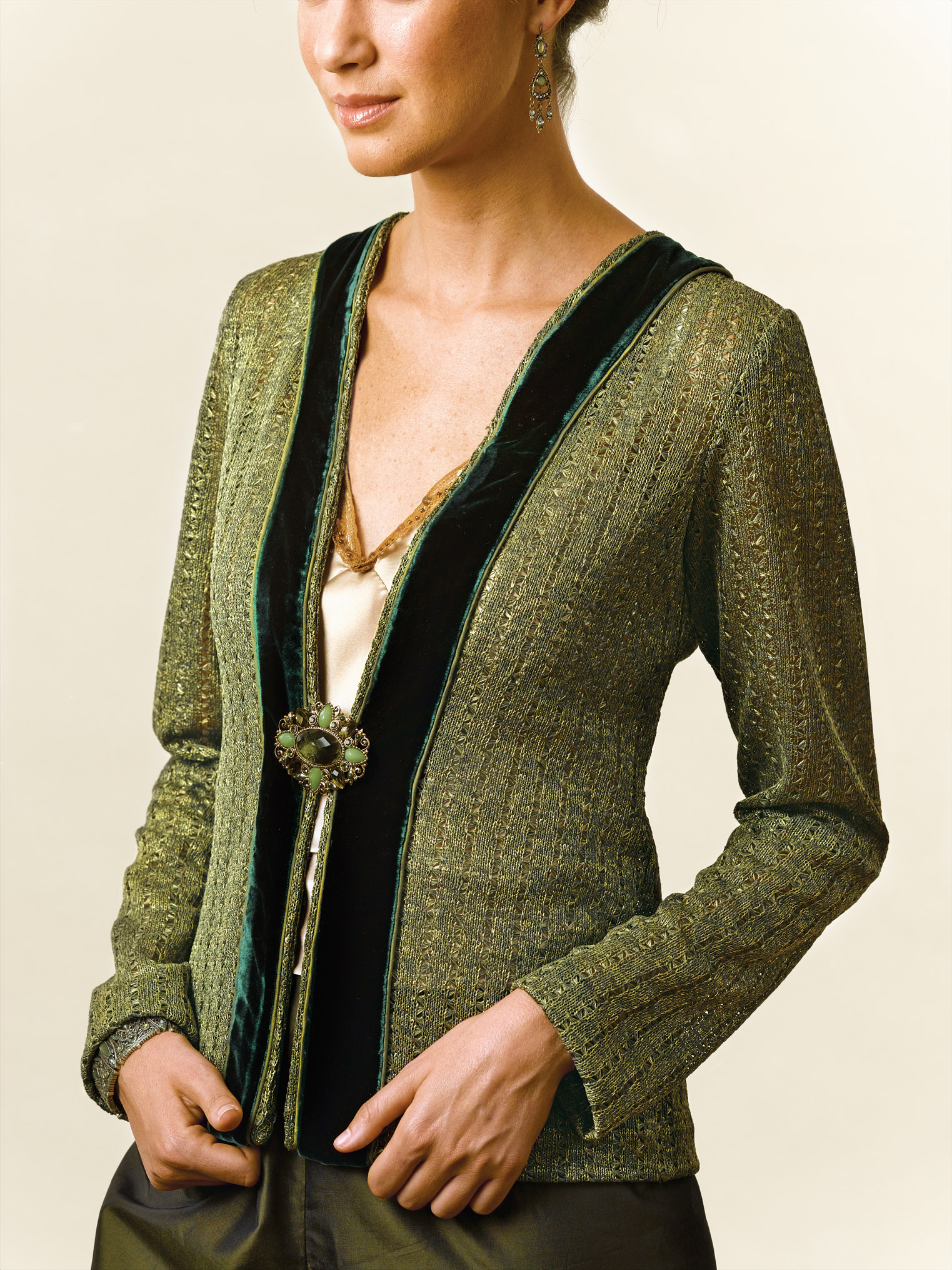
Taming Sweater Knits
Among the many sweater knits available, you’ll find yardage with a fuzzy, hand-knitted look; an open, lacy appearance; or a densely knitted surface that incorporates multiple yarns. These textured fabrics sometimes curl, fray, or are otherwise unstable. To keep them under control when you’re sewing, cut 1-inch seam allowances. Trim off the excess fabric later. Use needles marked “jersey” or “stretch”; these slide gently through knits without catching, breaking, or pulling the fibers.


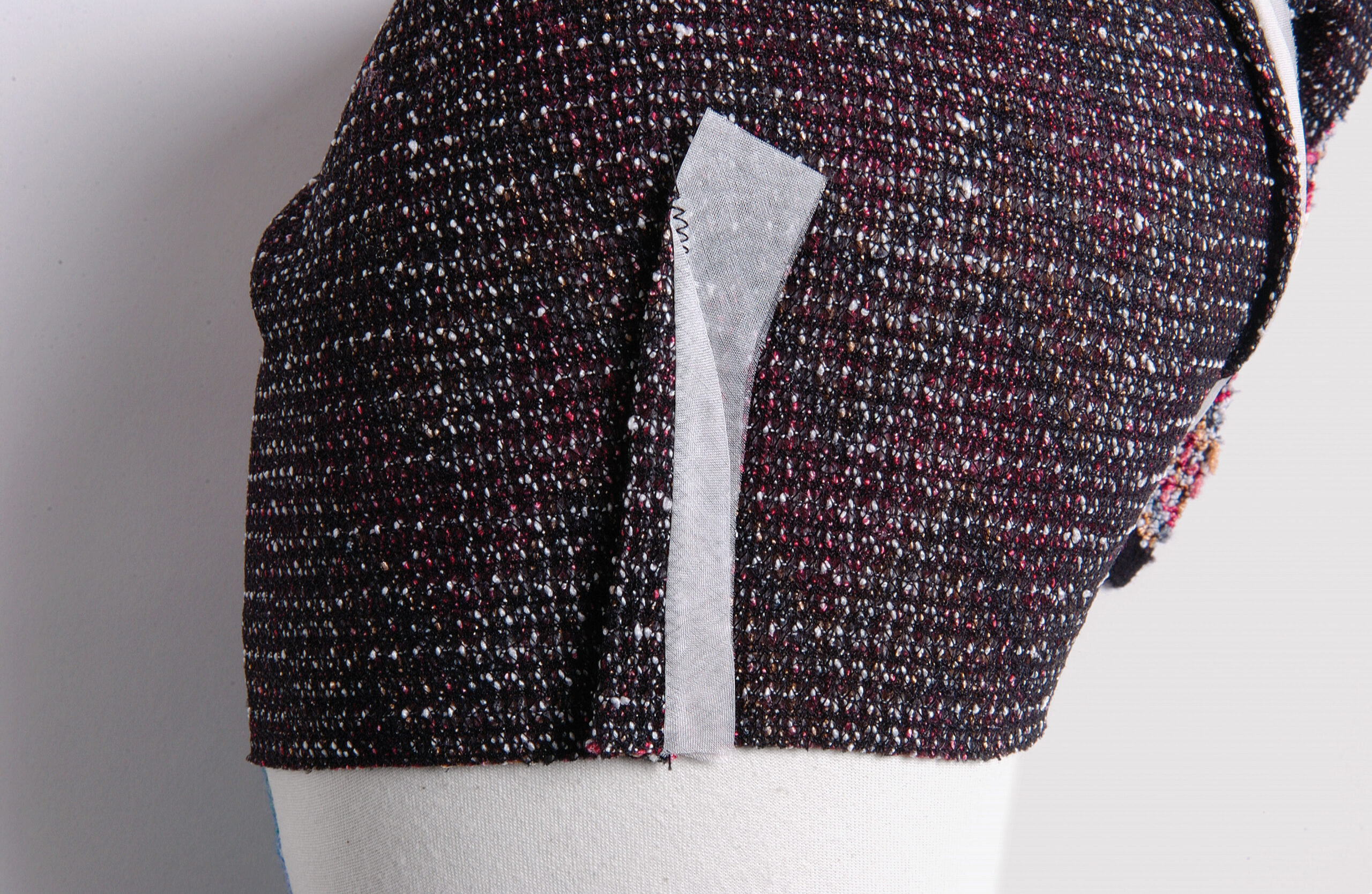


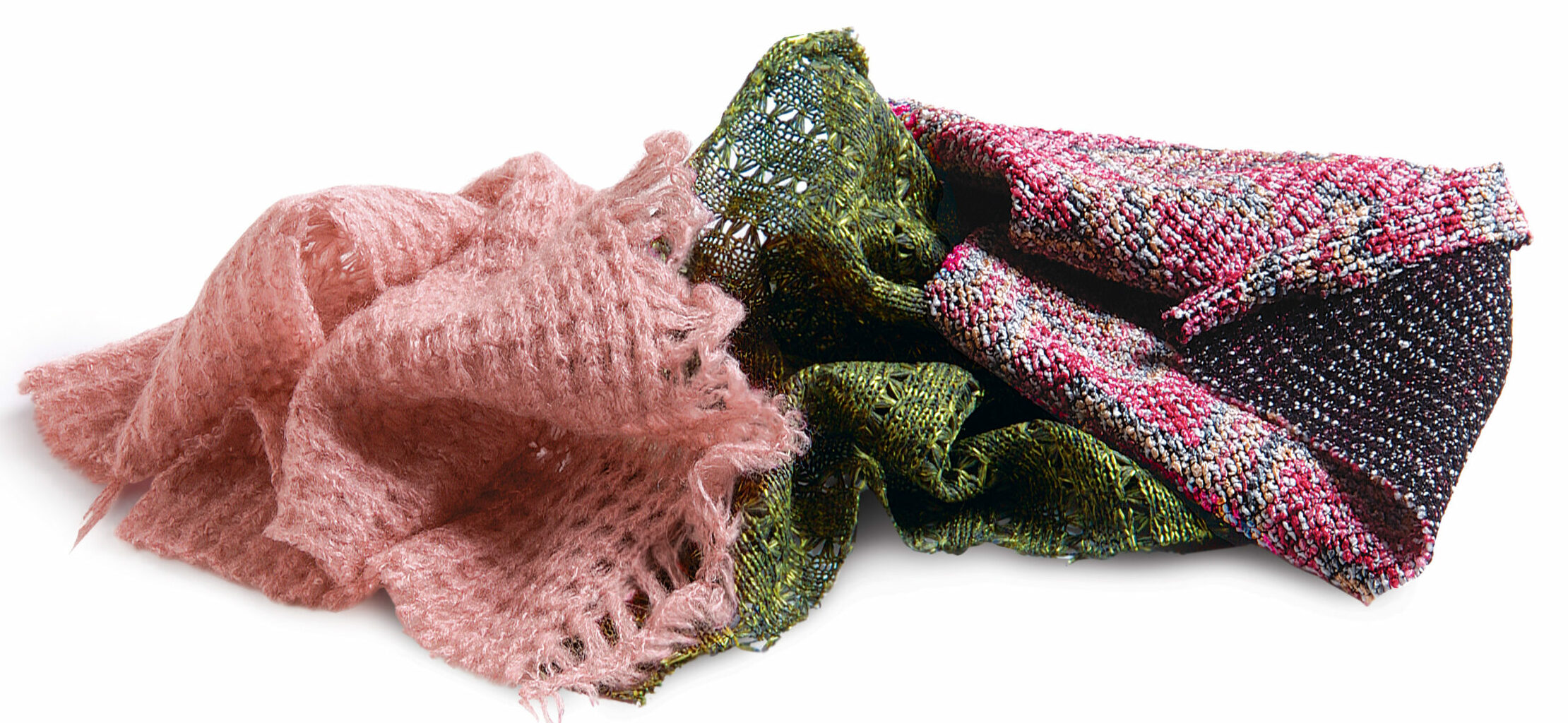



Log in or create an account to post a comment.
Sign up Log in